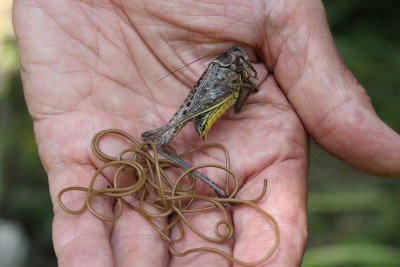
Wolf worms, also known as *Dermatobia hominis*, have a sneaky way of living. They latch onto a host—often an unsuspecting animal—and grow inside it. This relationship raises important questions. Can scientists observe and learn about these worms without taking a toll on their hosts? In a world that’s increasingly aware of animal welfare, this question is more relevant than ever. So, grab your coffee, and let’s dive deeper into this intriguing topic.
Understanding Wolf Worms
To start, it’s essential to know a bit about what wolf worms are. These parasites are the larvae of the botfly, and they have an unusual method of finding their hosts. Unlike many parasites that seek out hosts directly, wolf worms often rely on other insects, like mosquitoes, to deliver their eggs. Once deposited on the host, the larvae burrow into the skin, where they develop and feed.
This relationship is interesting yet concerning. While the wolf worms benefit from their host, the host often faces discomfort or injury. Think of it like a tiny passenger taking an unexpected ride—it’s not exactly a comfortable situation for the one being carried!
The Importance of Studying Wolf Worms
You might be wondering, why study wolf worms at all? An understanding of their life cycle can provide significant insights into ecology and evolution, helping researchers learn about how these parasites interact with their environments. Additionally, studying these worms can contribute to medical advancements, as some parasites often share similar biological mechanisms with certain diseases affecting humans.
By gaining knowledge about these creatures, scientists can also develop strategies for controlling their populations, ultimately affecting wildlife management and conservation efforts. For instance, if a certain type of animal is heavily impacted by wolf worms, conservationists might work harder to protect those species.
Ethical Considerations in Research
Here’s the thing: studying wolf worms without harming their hosts is not just a scientific consideration; it’s an ethical one. Many researchers today prioritize animal welfare, striving to minimize suffering wherever possible. This commitment is guiding how studies are designed and carried out in the field.
Researchers often look for ways to observe these worms in a non-invasive manner. Advanced imaging technologies, for instance, can help visualize the interaction between wolf worms and their hosts without requiring dissection or other forms of physical intervention.
Non-Invasive Research Techniques
So, how can scientists study wolf worms without causing harm? One way is through non-invasive research techniques. Here are some methods that researchers use:
- Imaging Technologies: Techniques like MRI or CT scans allow scientists to observe the structure and behavior of wolf worms inside their hosts.
- Field Observations: By observing hosts in their natural environments, researchers can gather data without disturbing them.
- Behavioral Studies: Studying host behaviors can give insights into how they respond to the presence of wolf worms without needing direct contact.
These methods not only safeguard the well-being of the hosts but also yield valuable data. Plus, they reflect a growing trend in scientific research that emphasizes compassion and respect for all living beings.
Challenges of Non-Invasive Studies
Even with these advancements, challenges remain. For instance, non-invasive techniques can be costly and time-consuming. Not every lab has access to cutting-edge imaging equipment, and field studies often require a lot of patience and resources.
Moreover, it’s crucial to remember that data collected through non-invasive means might not always capture the full picture. Some aspects of the relationship between the wolf worms and their hosts might only be observable through invasive methods. This raises an ongoing debate within the scientific community: how do we balance the need for knowledge with the need for ethical responsibility?
Future Directions in Wolf Worm Research
As technology progresses, so too does our ability to study wolf worms ethically. Emerging methods, such as genetic analysis and remote sensing, are paving the way for new insights. These advancements might allow researchers to track populations of wolf worms and their hosts in real-time, which could lead to more effective management strategies.
Collaboration among scientists, ethicists, and conservationists is also becoming more common. This inclusive approach can help ensure that research practices continue to evolve in ethical ways. By working together, the scientific community can foster understanding while protecting the hosts of these unique parasites.
In the quest to understand wolf worms, researchers face the critical challenge of studying them without harming their hosts. As we’ve explored, non-invasive techniques and ethical considerations play a significant role in how this research is conducted. With advancements in technology and an increasing emphasis on animal welfare, the future of studying wolf worms looks promising.
Ultimately, as we learn more about these fascinating creatures, we can better appreciate the complex relationships in nature. And in doing so, we can ensure that both the wolf worms and their hosts continue to thrive in our ecosystems. Who knows? The next time you hear about wolf worms, you might just have a deeper understanding of their hidden lives and the care scientists take to study them responsibly.
